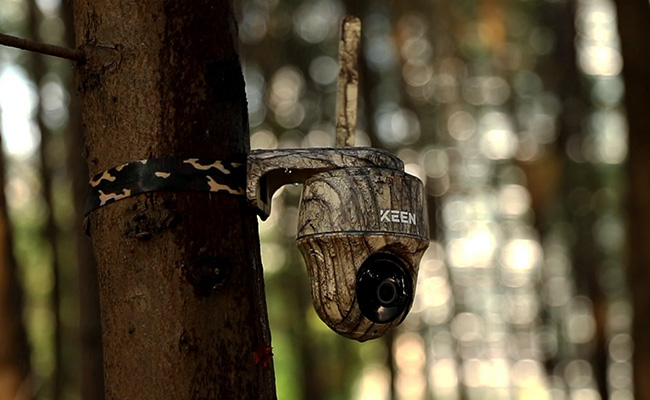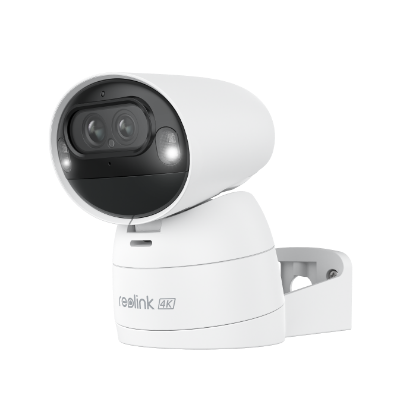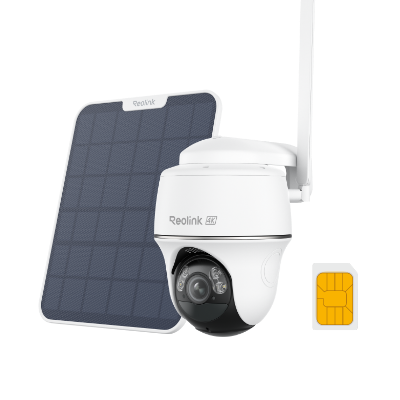9 Key Features to Consider When Buying A Trail Camera

You're planning to get a new trail camera, so you look online for reviews, guides, and specs of the cameras. With so many options available, it can be difficult to know where to begin.
What features should you look for? We have listed 9 key features to consider when shopping for a trail camera in this article, so keep reading.
Reasons to Get A Trail Camera
The reason you want to get a trail camera decides which features to consider when buying one.
-
For scouting and hunting in the season. A trail camera can monitor animals' movements in the wild and save people's time going there for checking.
-
For observation. A wireless trail camera can help people a lot to research wildlife and their natural behaviors closely, without them being there to disturb animals or leave a scent.
-
For home security. Some people also use a trail camera to monitor the backyards and hcheck who's sneaking into their property and ensure home security.
Cellular trail cameras are a great way to keep an eye on your property and get some great wildlife shots.
But how do cellular trail cameras work?
Basically, cellular trail cameras work by using a cell network to send data. The camera has a SIM card, which is connected to a cell network. When the camera takes a picture, the data is sent over the cell network to the remote viewer.
Key Features You Must Know Before Buying A Trail Camera Trail Cameras
Here are several key features of trail cameras to help you identify whether the camera is really good for you or just well advertised.
Animal Detection
Most trail cameras detect animal movements by using a Passive Infrared (PIR) sensor, which detects the emitted infrared energy from objects in the form of heat. When the difference between the temperature of the object and the ambient temperature reaches a certain value, the PIR sensor will be triggered.
To put it simply, when a warm animal or person walks into the camera's field of view, the PIR sensor can detect the temperature change and then activates the camera. Sometimes the PIR sensor may trigger false alarms since the animal's temperature is not obviously different compared with ambient temperature, or the moving objects are too far from the camera.
Usually a PIR sensor is good enough to detect animals in the wild. But to reduce false alarms for hunters or researchers, some manufacturers are working to equip their cameras with better technology that can distinguish the shapes of animals from other objects.
However, such trail camera with real animal detection is hard to find. Game cameras mainly use motion detection or PIR motion detection. When choosing a camera, you should figure out its detecting mode and consider whether it suits the place you want to install it.
Trigger Speed
The term trigger speed, or trigger time, refers to the amount of time it takes a camera to snap a photo once an animal's movement is detected. Trigger speed usually ranges from 0.5 second to 1 second, while some best trail cameras have speed less than 0.5 second.
Cameras with lower trigger speed tend to capture blur images or totally nothing when the animal moves fast. The shorter trigger time a camera has, the more likely it is to capture a complete picture of fast-moving deers or other animals.
Since trail cameras in the market are evolving, it's recommended to choose cameras with trigger speed of around 0.5 second or less. If you want to use the camera in the game trail, cameras with a trigger speed from 0.1 to 0.4 second are better choices. If you only need the camera to observe how animals behave during a time, such as eating, trigger speed around 0.5 second or a bit more is just fine.
Lens
There is nothing more important than the lens in a trail camera. Generally speaking, most wild cameras come with a fixed lens and thus offer you a limited field of view. You can choose a wide-angle camera to cover more areas and shoot pictures with more details.
Sometimes the animal is too far from the camera to be seen clearly. In this case, you can choose trail cameras with optical zoom, which allows you to zoom in to see specific details. But cameras with zoom usually have a narrower viewing angle. You can decide which one to choose depending on your needs.
For those who want to install their camera in an open and large area, a trail camera with pan and tilt is a great choice. Though such a camera has a fixed lens, it can pan left and right, tilt up and down, and offer you an unlimited field of view.
Image/Video Quality
Megapixel is also a key feature of trail cameras, for it determines how sharp and clear the images or videos will be. A trail camera's resolution ranges from 1080p to 8 megapixels and more. If you want to view more vivid scenes and animals, trail cameras with more megapixels are recommended.
Simply put, you can regard a megapixel as a million pixels. A pixel is the fundamental display element of an electronic screen or bitmapped image. An image consists of many vertical and horizontal pixels. Thus, the more pixels on an image, the clearer the image is and the more details you'll get.
Some trail cameras have different image resolution and video resolution to suit people' needs. The image resolution varies a lot among different cameras, while the video resolution is usually 720p, 1080p, and 4K. Similarly, the higher resolution means the better video quality.
Usually a trail camera with 4-5 native megapixels is good enough for you to see clear pictures of wild animals. We always see that some manufacturers advertise their cameras as having 24 megapixels. Is that true? Well, you should mind whether the megapixels are interpolated.
Interpolation means the process of duplicating the original pixels on an image via software to create more pixels. The interpolated pixels have nothing to do with your image clarity because they add nothing new to the photo. So when you see a 24-megapixel game camera next time, you'd better figure out whether it's real or interpolated.
Detection Zone/Detection Range
Detection Zone refers to the area in which the trail camera can sense a motion and be triggered to take photos. The area starts from the camera itself and spread far away in a V shape. Though such an area is limited to a certain width and length, most people care about the length more, which is also called detection range.
Detection range is important because it decided whether a far animal can be captured by the game camera. The average detection range for most game cameras is around 60 feet. But it doesn't mean you must choose a camera with so long detection range. If you wish to capture animals that tend to appear at the edge of the field, a longer detection range can help you a lot. But if the field is not wide enough, like the deep woods, a 50-foot detection range is not bad.
Capture Mode
There are several ways for a game camera to take pictures/videos. Usually most trail cameras are battery-powered and fall "asleep" when nothing happens. Once triggered, some cameras may take still photos which show you what passes by, while others may take a video to show the process of a deer walking through.
However, a video uses much more memory than an image. Some people want to save memory and also know what happens, then a trail camera that takes a burst of still pictures is better for them. That is, once triggered, the camera will capture a set of pictures (normally 1 to 9) during a short time and all these pictures together may look like a video. You can not only know what triggers the camera but also know what's going on there.
Night Vision
Nearly all trail cameras are equipped with IR LEDs in order to take pictures at night since many cautious animals often come out when the land is covered by darkness. In the nighttime when there are not enough lights for the camera to shoot pictures, infrared LEDs can emit enough flash to capture animals clearly without disturbing them. Usually the picture is black-and-white.
Based on the wavelength, IR LEDs are divided into two types: low-glow and no-glow. Low-glow IR LED uses the 850 nanometers (nm) spectrum of light, which is invisible to human and most animals. But the red glow it gives off still can be seen when you look directly at the camera. Thus it's recommended to put the camera above the eye level of animals.
No-glow IR LED uses the 940 nanometers (nm) spectrum of light, which can be invisible at all and won't scare those skittish animals. Even though no-glow trail cameras tend to capture dark and faint pictures, they are getting more and more popular in the market.
Memory
It is critical to choose a trail camera with enough amount of memory. Traditional trail cameras may use an SD card to store all the pictures or videos. The capacity of an SD card ranges from 16 GB, 32 GB to even 128 GB, which you should confirm with the manufacturer in advance. But note that you need to go back to the field to retrieve the SD card and then view the pictures inside.
More and more people choose cellular trail cameras because they can send pictures or videos to your cell phone by using the cellular network. In this way, you don't have to go to the field and leave scent there.
Some high-end trail cameras can offer you live streams so that you can monitor the activity in the wild anytime. However, there is an extra cost for cellular cameras because you may need to pay for the cellular plan. Despite its convenience, your decision depends on how much you want to pay for a trail camera.
Power Supply
Since trail cameras are mainly installed in the wild where you may not visit frequently, you definitely want them to stay there and work for a longer time. Thus the battery and battery life matters a lot. Most trail cameras run on AA batteries whose life ranges from 6 months to a year.
Generally speaking, Nimh rechargeable batteries are good as they can be recycled for longer life and save your money in the long run. Lithium batteries offer longer battery life and better performance in the wild. Even though it's a little expensive, you'll see how they pay off when you get a picture of the buck after waiting for a long time.
Apart from rechargeable batteries, some manufacturers offer solar panel which helps the camera works long time. In places where there are frequent motions, a battery powered trail camera with a solar panel seems to be a great choice.
What is a wildlife camera?
The wildlife camera, or trail camera, is a device designed for filming and photographing animals outdoors. When an animal passes by, it begins filming or photographing immediately. In some models, you can download the files wirelessly over Wi-Fi, while others allow you to save the images to a memory card that can be inserted into your computer.
Other Features to Consider for Better Experience
Besides the key features you must consider before buying a trail camera, there are several other features you may like that would give you a better hunting experience.
-
Camouflage & Installation: Nearly all the trail cameras are camouflaged. All you should care about is whether the color can make the camera melt into the environment. Also cameras better come with a strap or bracket that helps you install them on a tree.
-
Weatherproof: The weather in the field can be harsh. A good trail camera needs to be rugged enough to endure torching sunshine, heavy rain, snow and others so that you can keep it out all year round. The weatherproof rating helps you know how tough your camera is. For example, IP66 weatherproof camera is tough enough to resist dust and splashes of water.
-
Instant Notification: This feature is often seen in cellular trail cameras. When your camera is triggered, it will send an instant notification to your cell phone so that you can check what's going on immediately. The important movements of deers won't be missed.
-
GPS: If a trail camera has GPS built in, you can easily track its position on the map in case it's stolen by someone or taken away by curious animals. You may also mark on the map in places where different animals appear and track their movements in a simpler way.
-
Timelapse: This feature is designed for fun. Like other cameras, some trail cameras can shoot pictures based on an interval of time, whether there is motion or not. The interval ranges from one minute to one hour. Finally you'll get a video or near-video quickly showing what happens during a certain period.
Top Picks for Trail Cameras
4K Dual-Lens Wi-Fi Battery Camera - Reolink Argus Track
The Argus Track camera boasts a 4K dual-lens setup, delivering crisp 8MP Ultra HD video quality for detailed surveillance. Equipped with dual-band Wi-Fi support (5GHz and 2.4GHz), it ensures reliable connectivity for remote monitoring. Powered by solar or battery, it offers uninterrupted operation, ideal for outdoor installations.
With pan, tilt, and 6X hybrid zoom capabilities, it provides versatile coverage and tracking options. Its auto-zoom tracking feature dynamically adjusts zoom levels to monitor moving objects effectively.
4K Dual-Lens Wi-Fi Solar/Battery Camera
4K 8MP Ultra HD, Auto-Zoom Tracking, Pan, Tilt & 6X Hybrid Zoom, Color Night Vision, Dual-Band Wi-Fi.
4K Wireless 4G PT Battery Camera - Reolink Go PT Ultra
The Reolink Go PT Ultra is a versatile wireless surveillance camera boasting 4K 8MP Ultra HD resolution for clear footage, whether day or night, thanks to its color night vision capabilities.
Powered by batteries or solar panels, it offers flexible installation options, making it suitable for remote locations. Smart detection features, including motion detection and customizable alerts, enhance security by notifying users of any detected activity. 4G LTE connectivity ensures easy setup and reliable remote access to live video feeds and recordings, while its weatherproof design guarantees durability in outdoor environments.
4K 8MP Wire-Free 4G LTE PT Battery Camera
4K 8MP; Smart Detection; 355° Pan & 140° Tilt; Battery/Solar Powered; Color Night Vision; Smart Real-Time Alert.
FAQs
1. Is a cellular trail camera worthwhile?
It depends on your needs. Cellular trail cameras can send images and videos to your cell phone or computer from far away. Some high-end cellular trail cameras can offer you live streams. All these are made to let know what's going on outside without frequently visiting the field and leaving scents to disturb animals. However, such features tend to consume more power and occupy more storage capacity. Also cellular trail cameras are relatively expensive and you may need to pay for extra cellular plans. If you are an expert hunter or wildlife observer who wishes to know what happens anytime, you can consider cellular trail camera as your option. If you just need it to shoot images only when animals pass by, you can choose non-cellular trail cameras.
2. What is the best resolution for a trail camera?
Generally speaking, the real resolution of a trail camera is 2-5MP. The higher, the clearer. One thing you should know is that images in higher resolution will occupy more capacity. You can visit the website of the manufacturer to see the real-world pictures caught by the camera and decides whether the image quality is good enough for you. For trail cameras, 4MP resolution can offer you clear images and videos.
3. What's the difference between white flash, low-glow flash, and no-glow flash?
Simply put, the main difference between these three kinds of flash lies in the night vision effect. White flash can emit bright light in order to take colorful and clear pictures in the darkness. However, it's so obvious that animals may be scared. Low-glow flash, or IR flash, is not as obvious as white flash because it emits infrared light that is less visible to alert animals. But the images taken are black and white and not as clear as those taken by a white flash. No-glow flash, or black flash, emits light that is nearly invisible. It's hard to be seen and won't scare animals at night. Pictures taken are also black and white, but they might be darker and fainter than those taken by low-glow flash.
Conclusion
There is a lot of fun to have with a trail camera, not only for hunting but also for observing animals and protecting the yards. Trail cameras are evolving and have various features to offer. The basic introduction of those features above can let you know which kind of trail camera to choose based on your needs. Besides the functions, you should consider your budget. Some features are crucial, but not all of them are necessary. Hope this guide can help you make the right choice, not the most expensive choice.
- Are Trail Cameras Good for Home Security? Trail Camera vs. Security Camera
- Cellular Trail Cameras: How They Work, Best Pick & Installation Tips
- Guide for Picking The Best Garden Wildlife Camera in the UK
- Farm Security Cameras — How to Choose the Best One
- Top 3 Garden Camera Solutions to Watch Wildlife & Plants
Search
Subscribe for the Latest Updates
Security insights & offers right into your inbox


